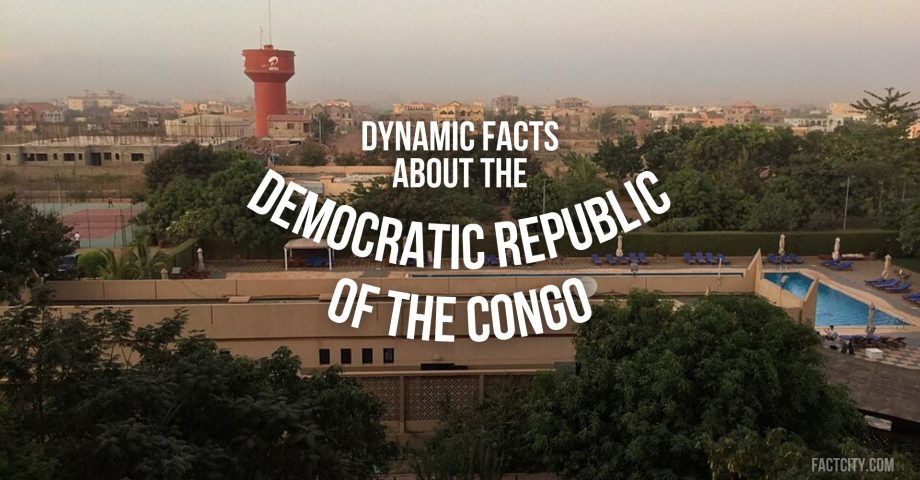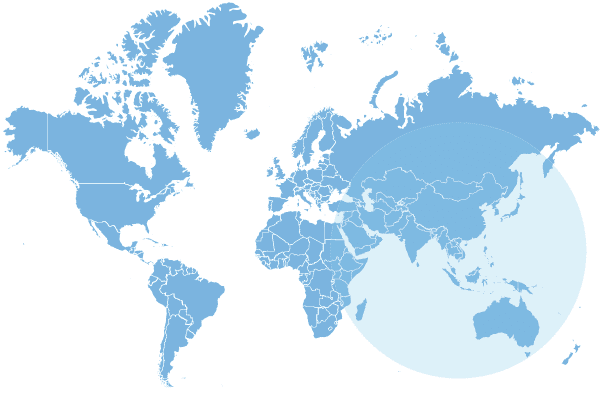The Democratic Republic of the Congo (DRC) is easily one of the biggest countries in Africa. Yet, many of us don’t know half of the things that make this country so special! It’s also one of several areas in Africa to have held the name of “Congo,” too – so I’m here to resolve some of the confusion.
The DRC is best known for its amazing forests in its world-famous Congo Basin, its rich array of natural minerals, and its eclectic music scene. In this fact file, I’ll break it all down for you – keep reading for some interesting facts about the Democratic Republic of the Congo that might just surprise you.
1. The DRC is Africa’s second largest country.
The Democratic Republic of the Congo is the second-largest country in Africa, covering about 2.3 million square kilometres – that’s over 900,000 square miles.
The largest country in Africa is in fact Algeria, which measures over 919,000 square miles or 2.38 million square km in land area. That means it covers about 7.9% of Africa – the DRC covers about 7.7% of the continent by comparison!
Compare this to our bold little island – the United Kingdom is just over 94,000 square miles, or 242,000 square km in land area. That means DR Congo is almost ten times the size of us!
2. DR Congo is a central African country with lots of neighbours.
The DRC is located in Central Africa and is bordered by nine other countries. The Central African Republic, Angola, Burundi, South Sudan, Rwanda, the Republic of the Congo, Uganda, Tanzania, and Zambia border it.
In fact, this makes it the African country with the most land borders across the whole of the continent! Algeria, Sudan, and Mali all have seven neighbouring countries each, in joint second place.
3. The capital of DR Congo is Kinshasa.
Kinshasa, the capital city of the DRC, is also the largest city in the country. There are thought to be more than 17.7 million people living in the city as of 2025 – which completely dwarfs the already massive population of London, UK, said to be home to fewer than nine million people – that’s half of the people in Kinshasa!
It’s thought that the DRC’s population is around 106 million people at the time of writing, meaning the capital’s population makes up between 16-17% of the total number of citizens. Comparatively, London’s population is around 13-14% of the whole of the UK.
4. There are hundreds of languages spoken in the DRC.
The DRC is known for being a very linguistically diverse country! Over 200 languages are spoken there, and French is the official language used in government and education. However, other national languages recognised across the country include Kikongo, Lingala, Tshiluba, and Swahili.
English, however, is not commonly spoken here – it’s normally only spoken by people who have moved here or by people based in the DRC who do international business. That means it’s well worth brushing up on your French, at least, before you travel!
5. The DRC has a very rich biodiversity.
Some of the incredible biodiversity across the DRC includes the Congo Basin rainforest, which is the second-largest rainforest in the world after the Amazon! This forest is home to multiple species, including endangered mountain gorillas, okapis, bonobos, and chimpanzees. In fact, the bonobo and the chimpanzee are considered extremely rare – and are in fact endemic to the Congo Basin.
It’s thought that there are more than 400 different species of mammals that live across the region, and 1,000 types of bird! Plant lovers, too, will be interested to know that there are more than 10,000 green growths emerging from the DRC and its amazing rainforest.
Regrettably, the Congo Basin is constantly under threat, as are its animals – thanks to overhunting, economic issues in the surrounding DRC, overmining, and regular deforestation. Conflict, too, is said to have reduced the number of people who could actively work to look after the animals and plant life in the Basin.
6. It wasn’t always known as the Democratic Republic of Congo.
Believe it or not, the Democratic Republic of Congo is actually a modern name for the country! It was known as Zaire from 1971 to 1997 under the rule of Mobutu Sese Seko.
And, to outsiders, it can be easy to get confused – there are two different countries referred to as Congo in Africa. One is the DRC, and the other is the Republic of Congo. I’ll keep referring to the Democratic Republic as DRC or DR Congo to help avoid any confusion!
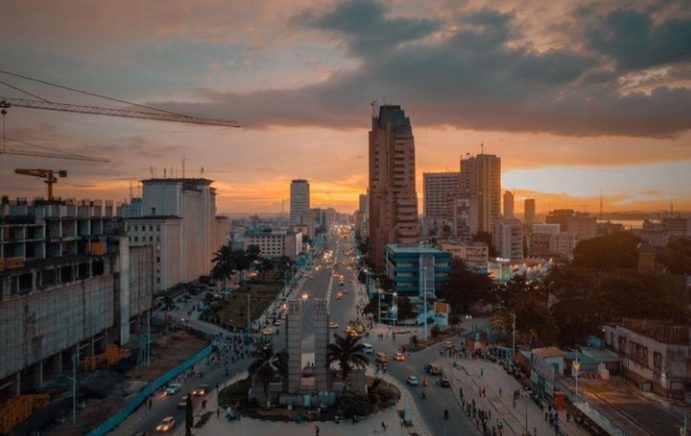
7. It was a colonized country for a long time.
Before gaining independence, the DRC was a Belgian colony. Back then, it was known as the Belgian Congo. The colonial period saw the exploitation of its resources, particularly rubber and minerals. The DRC eventually gained independence from Belgium in 1960.
June 30th is Congo Independence Day, celebrated every year to mark the end of Belgian involvement in the region. The DRC was never colonised by the UK, interestingly enough – as Belgium had been established as the Congo Free State by King Leopold II in the late 19th century.
That isn’t to say the UK had zero influence over the area. In fact, history states that the UK pressured Belgium’s Parliament to take over the DRC in the early 20th century, lifting control from the King.
8. The country is filled with natural resources.
The DRC is known for its abundance of natural resources, including minerals like cobalt, copper, and diamonds. However, the exploitation of these resources has been filled with conflict and corruption.
It reportedly has the 60th largest gas reserves in the world, too, none of which are imported or exported. It’s also the 76th largest producer of natural gas in the world, placing it in the lowest quarter of the top 97.
9. The DRC’s history is filled with conflicts.
The DRC is no stranger to periods of conflict and even civil war. The conflicts have often been linked to political instability, resource disputes, and more.
The United Nations, or UN, has had one of its largest peacekeeping missions with the DRC. MONUSCO, or the United Nations Organization Stabilization Mission in the Democratic Republic of the Congo, has been in place since the early 2000s, aiming to stabilize the region and promote peace.
The UK government currently advises against travel to all parts of the DRC at the time of writing, mainly as a result of ongoing instability and protests across the country, where tourists and travellers may be at risk. Some border crossings, too, such as those heading into Rwanda, are able to close at short notice due to conflict.
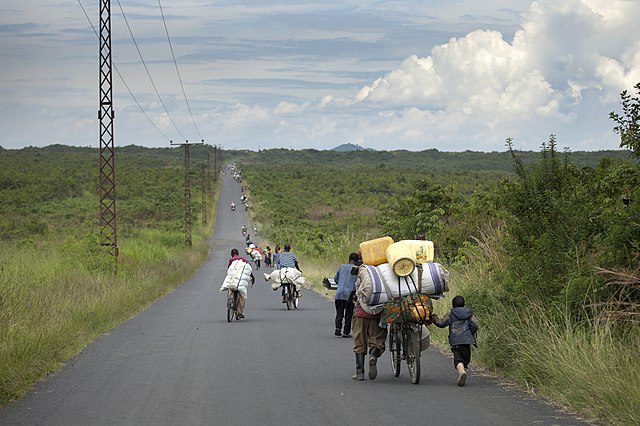
10. There are several travel requirements UK visitors need to keep in mind.
If you do travel to the DRC from the UK, you’ll need to make sure you have a full, valid passport, which will still be in date at least six months after you arrive in the country.
You’ll also need to apply for a visa to enter the country, which you can obtain through the DRC Embassy, based in the UK. In some cases, you’ll also need to obtain a consular certificate if you wish to visit or stay in the DRC for an extended period of time – again, the Embassy will be able to generate this for you.
There will also be vaccine requirements – you’ll need to be protected against polio, in some cases, and you will certainly need a vaccination against yellow fever to be allowed to pass border control.
Do also keep in mind that there are departure fees heading out of DR Congo – a $55 equivalent tax on international flights, and within the country, a $10 tax.
11. It’s not clear how many British people visit the DRC every year.
Statistics sadly aren’t crystal clear on how many UK visitors head to the DR Congo annually. However, the country is estimated to welcome more than 350,000 people total, based on figures from 2016.
There are estimated to be more than 29,000 people in England alone who were born in the DRC – meaning many in this number could travel to and from the region every year. Unfortunately, we just don’t know for certain!
12. Patrice Lumumba played an important role in the country’s independence.
Patrice Lumumba was an essential figure in the DRC’s struggle for independence. He later became the country’s first democratically elected Prime Minister in 1960. Tragically, he was executed via firing squad by secessionist rebels in early 1961.
Heartbreakingly, only a tooth remains of Lumumba – which was buried in Kinshasa in 2022, via public funeral. His laying to rest was marked with a banner reading “Many thanks, national hero.”
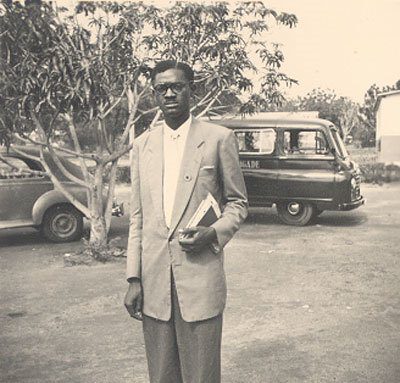
13. The DRC has had struggles with viruses – in particular, Ebola and COVID-19.
The DRC has experienced several outbreaks of the Ebola virus. It has been a real challenge for public health and medical infrastructures within the country. It’s thought hundreds of people have died unnecessarily as a result of outbreaks as recently as 2020.
The DRC struggled, too, with COVID-19 – as have many places across Africa and worldwide. It’s thought that almost 100,000 cases were recorded here, with 1,468 people dying associated with the virus.
Despite its smaller population, the UK suffered worse under COVID-19 based on official figures. At the time of writing, more than 24.9 million cases were recorded, with 232,112 deaths associated. Almost the total number of people who died from COVID in DRC died in the UK in one day, in April 2020.
14. There are several routes to and from Kinhasa from the UK.
It’s possible to fly into the DRC’s capital from several of the UK’s main airports and supported airlines. However, most will fly out of London’s Heathrow Airport.
On the way back, several airlines will carry passengers to Inverness, Birmingham, and Manchester, according to details from SkyScanner accessed at the time of writing. In many cases, there will be layovers to watch for. Look for airlines such as Kenya Airways, easyJet, Brussels Airlines, Ethiopian Airlines, Air France, and Turkish Airlines offering these flights.
Including layovers, it will typically take you just under 24 hours to get from the UK to Kinshasa, DRC. The fastest flights might get you there in fewer than 18 hours, but at almost double the cost.
15. The DRC uses the Congolese Franc.
Before you travel, it’s worth remembering that the DR Congo uses the Congolese Franc across the country, so always be sure to check with your bank or trusted currency provider for the latest and best rates.
At the time of writing – and this will change frequently – £1 is worth 3,860 CDF. This is the highest it’s been on the exchange on record, with the lowest exchange rate having been £1 to around 1,122 CDF in 2016.
Therefore, always be ready to check the latest exchange rates and figures before you head abroad. Several factors can affect the strength of the exchange, including politics and inflation. Don’t get caught out before you go!
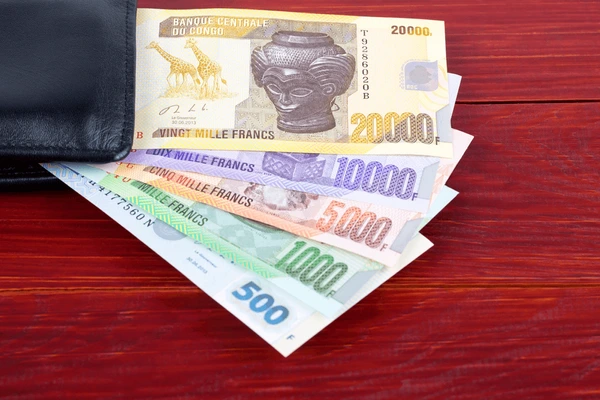
16. There’s a British Embassy you should take note of in Kinhasa.
Just as there’s a DRC Embassy in the UK, there’s also an Embassy you can visit in the DRC should you need any support once you’re there. The UK is a member of the UN’s Security Council, meaning it has a firm interest and investment in helping to keep the region stable.
The British Embassy Kinshasa can be found on 83 Avenue Roi Baudouin, Gombe, in the capital. There’s a complete guide on the services and support available from the Embassy that you can read via the UK government website.
17. The DRC is a very poor country.
Despite DR Congo being rich in minerals, it remains one of the world’s poorest nations, largely as a result of poverty. According to World Bank statistics, it’s estimated that almost three-quarters of all people living in the country persist on less than £1.62, or equivalent, each day (based on current exchange figures).
However, its economy is showing some resilience, with GDP having grown slightly in the past few years, though with forecasts showing it likely to slow and balance as the decade progresses.
Wealth in the country is reportedly displaced as a result of mineral gains failing to reach the DRC’s people – it continues to struggle under authoritarian rule, inner conflicts, and humanitarian crises.
18. DR Congo has a stable, reasonably pleasant climate.
Across the year, the DRC experiences average temperatures of around 25 °C during the day, which cools down at night. In the UK, the average day temperature is around 18 to 25 °C – meaning despite our famous drizzle, the climate isn’t too dissimilar!
Speaking of rainfall, we might compete closely with the DRC too – but let’s take a look at the figures just in case. Research suggests that there’s an average rainfall here of between 1,200 and 2,000 mm every year, and there’s not much in the way of seasonal variation. Much of the rainfall here, of course, occurs in the Congo Basin, the stunning rainforest!
Believe it or not, the UK experiences less rainfall than the DRC – again, mainly thanks to the Congo Basin. In Britain, we typically see between 800 and 1,400 mm of precipitation every year. That means some years we may see up to half the rain that the DRC does!
So, a trip out here is unlikely to be much of a culture shock as far as the weather is concerned – particularly if you’re in the basin!

FAQs about the Democratic Republic of the Congo
Are Congo and the Democratic Republic of Congo the same thing?
Officially, the country is known as the Democratic Republic of the Congo, but many simply call it Congo. However, they are not the same nation as their neighbouring country, the Republic of Congo. The DRC was once known as the Belgian Congo, and the RC was once called the French Congo, as a result of colonialism. Confused yet?
Which Congo speaks French?
Both Congos speak French – for example, French is one of the official languages of the Democratic Republic of Congo. However, it plays host to many other languages spoken by citizens, as mentioned above. The Republic of Congo, meanwhile, also speaks French in the main – with Bantu languages largely making up the remainder. There are scores of different languages spoken across both nations!
Was the DRC a French Colony?
No, the DRC wasn’t a French colony – but its neighbour, the Republic of Congo, was. The modern Republic was once known as the French Congo, starting in 1880 and eventually releasing in 1960. The DRC was a Belgian colony until the 1960s, when the region gained its independence. The nation celebrates its independence day every year on June 30th.
Further reading
https://facts.uk/tag/Africa/
https://www.worldbank.org/en/country/drc/overview
https://www.britannica.com/place/Democratic-Republic-of-the-Congo
Do you know any interesting facts about the Democratic Republic of the Congo? Share them in the comments below!
